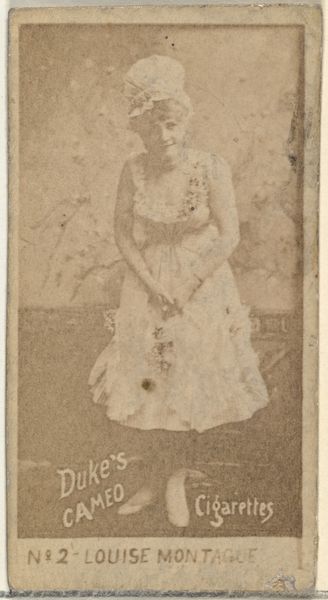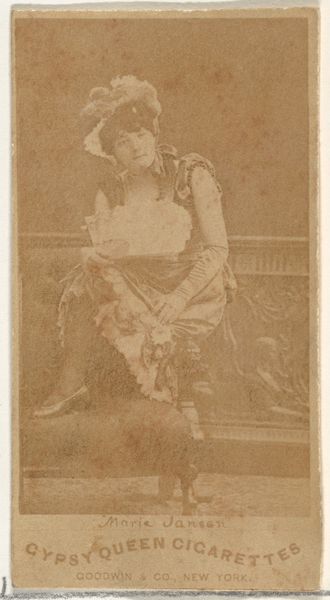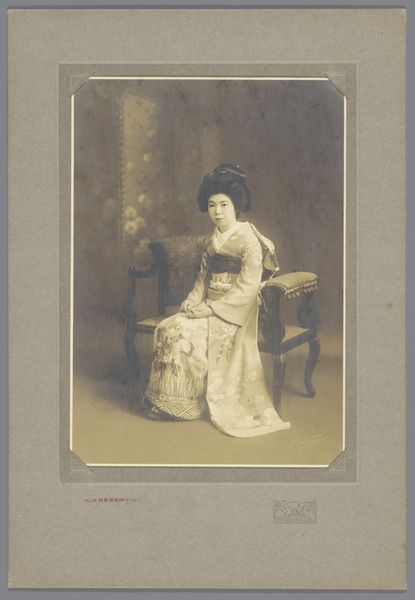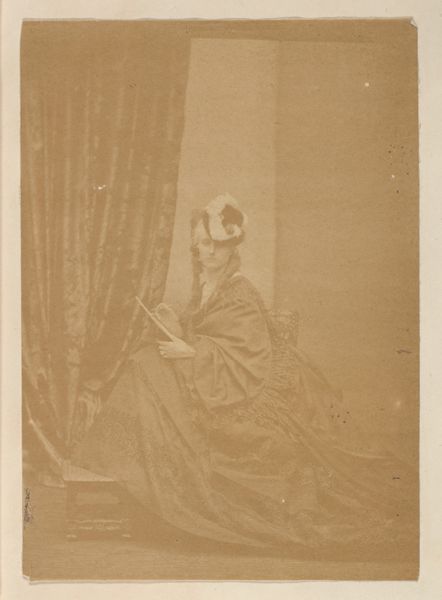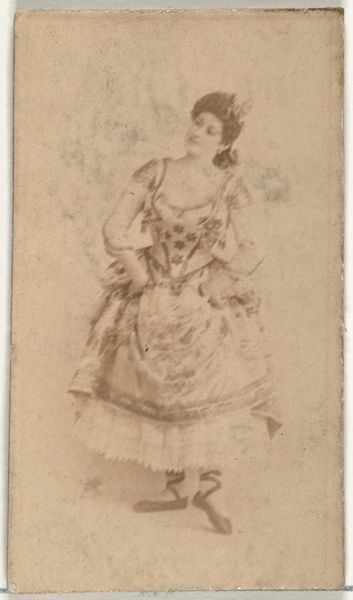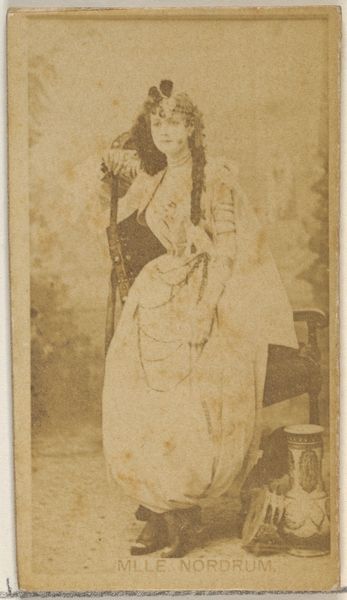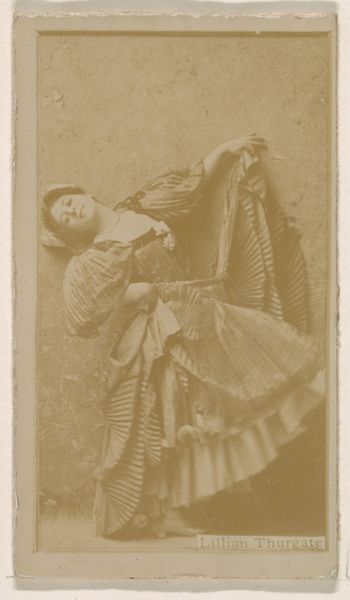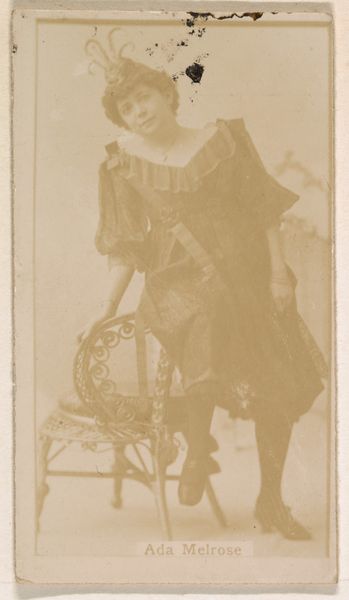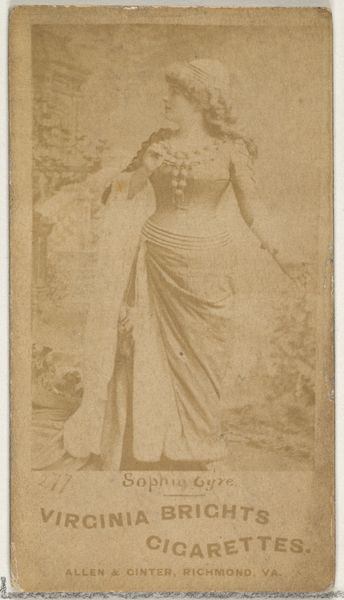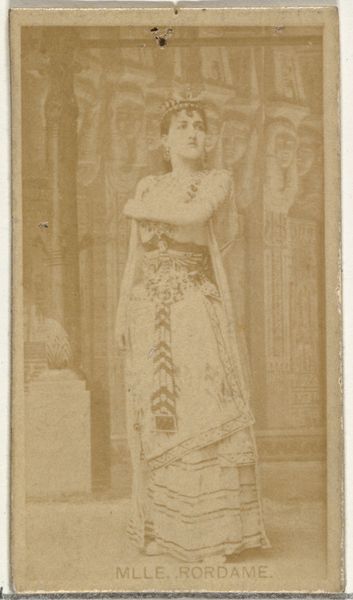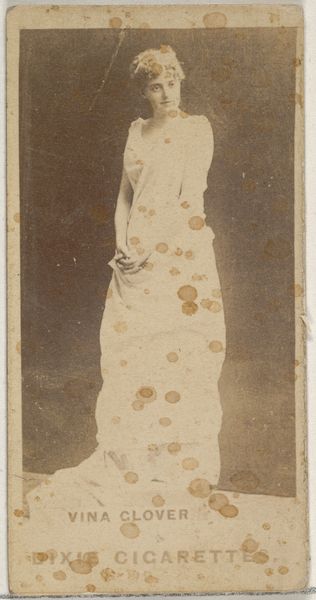
photography, albumen-print
#
portrait
#
photography
#
albumen-print
Dimensions: height 250 mm, width 174 mm
Copyright: Rijks Museum: Open Domain
Editor: Here we have "Portrait of an Unknown Woman with a Fan," an albumen print photograph from between 1870 and 1900 by Louis Martin. It's delicate, almost ethereal, in its faded sepia tones. What can you tell us about it? Curator: It's fascinating to consider this photograph through the lens of material history. The albumen print process itself, utilizing egg whites to bind the photographic chemicals to the paper, speaks to a very specific moment in the history of photographic production. Editor: Egg whites, really? How would that influence the art itself? Curator: Think about the labor involved in that process, and how albumen printing changed the role of photography in the mid-19th century by allowing for mass production of prints from a single negative. The availability of portraits like this one democratized representation to a degree. Also, albumen prints were commonly hand-tinted and then sold. How does it feel that this image represents an every-person or the rising middle class, due to lower barriers to having a professional portrait done? Editor: So, the photograph's material and process were really important? How are images like these received in their time, if portraits suddenly are less elitist and more of a commodity? Curator: This photograph is less about aesthetic expression, perhaps, and more about the means of production and circulation of images in the late 19th century. It's a portrait of a specific woman, certainly, but also a portrait of a society grappling with the implications of technological advancements and social change and how technology shifts status and access to luxury. The labor, materiality, and even the implied act of consumption are embedded within its very being. Editor: I hadn't thought about the social implications of the printing process itself. Thanks for this new view. Curator: It is in the object where the hidden history and material value sits.
Comments
No comments
Be the first to comment and join the conversation on the ultimate creative platform.

